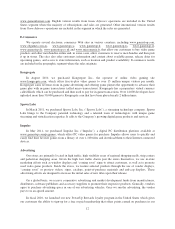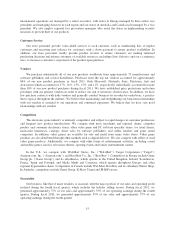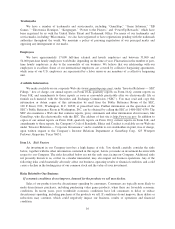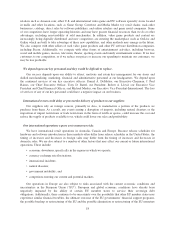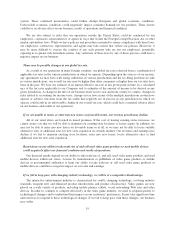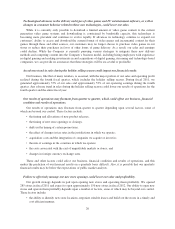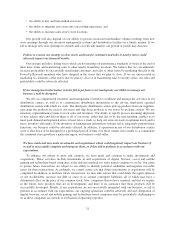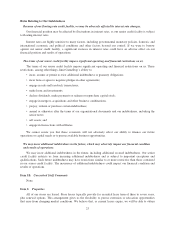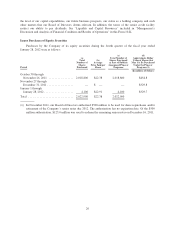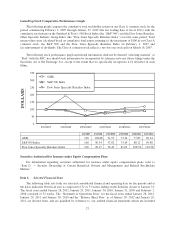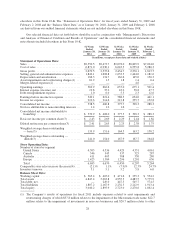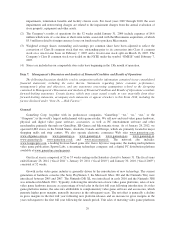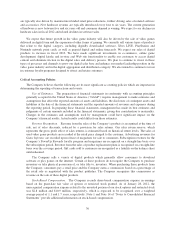GameStop 2011 Annual Report Download - page 36
Download and view the complete annual report
Please find page 36 of the 2011 GameStop annual report below. You can navigate through the pages in the report by either clicking on the pages listed below, or by using the keyword search tool below to find specific information within the annual report.Technological advances in the delivery and types of video games and PC entertainment software, as well as
changes in consumer behavior related to these new technologies, could lower our sales.
While it is currently only possible to download a limited amount of video game content to the current
generation video game systems and downloading is constrained by bandwidth capacity, this technology is
becoming more prevalent and continues to evolve rapidly. If advances in technology continue to expand our
customers’ ability to access and download the current format of video games and incremental content for their
games through these and other sources, our customers may no longer choose to purchase video games in our
stores or reduce their purchases in favor of other forms of game delivery. As a result, our sales and earnings
could decline. While the Company is currently pursuing various strategies to integrate these new delivery
methods and competing content into the Company’s business model, including hiring employees with experience
in digital gaming and making investments in and acquisitions of digital gaming, streaming and technology-based
companies, we can provide no assurances that these strategies will be successful or profitable.
An adverse trend in sales during the holiday selling season could impact our financial results.
Our business, like that of many retailers, is seasonal, with the major portion of our sales and operating profit
realized during the fourth fiscal quarter, which includes the holiday selling season. During fiscal 2011, we
generated approximately 37% of our sales and approximately 53% of our operating earnings during the fourth
quarter. Any adverse trend in sales during the holiday selling season could lower our results of operations for the
fourth quarter and the entire fiscal year.
Our results of operations may fluctuate from quarter to quarter, which could affect our business, financial
condition and results of operations.
Our results of operations may fluctuate from quarter to quarter depending upon several factors, some of
which are beyond our control. These factors include:
• the timing and allocations of new product releases;
• the timing of new store openings or closings;
• shifts in the timing of certain promotions;
• the effect of changes in tax rates in the jurisdictions in which we operate;
• acquisition costs and the integration of companies we acquire or invest in;
• the mix of earnings in the countries in which we operate;
• the costs associated with the exit of unprofitable markets or stores; and
• changes in foreign currency exchange rates.
These and other factors could affect our business, financial condition and results of operations, and this
makes the prediction of our financial results on a quarterly basis difficult. Also, it is possible that our quarterly
financial results may be below the expectations of public market analysts.
Failure to effectively manage our new store openings could lower our sales and profitability.
Our growth strategy depends in part upon opening new stores and operating them profitably. We opened
285 stores in fiscal 2011 and expect to open approximately 150 new stores in fiscal 2012. Our ability to open new
stores and operate them profitably depends upon a number of factors, some of which may be beyond our control.
These factors include:
• the ability to identify new store locations, negotiate suitable leases and build out the stores in a timely and
cost efficient manner;
20




